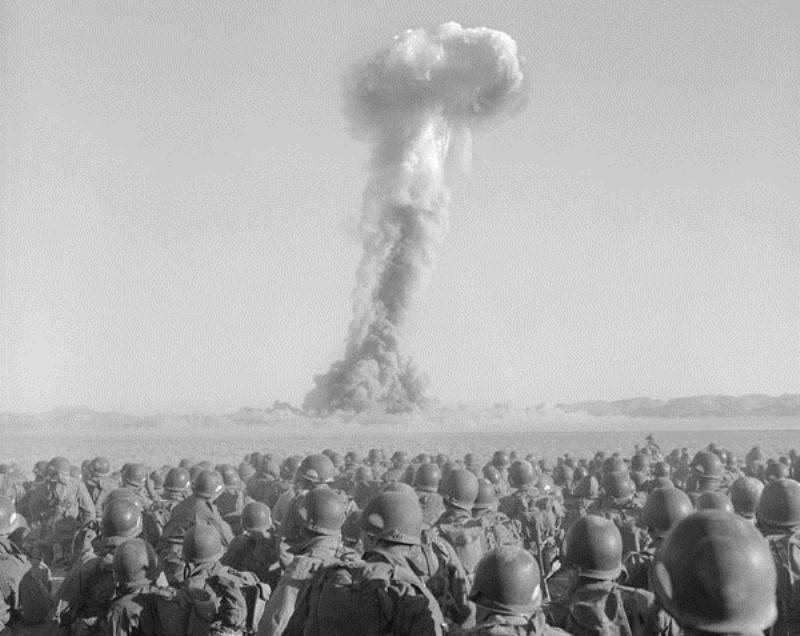American historian: it may be time for the Cold War army again

American military historian, Ph.D. Robert Williams, on the pages of the American website War on the Rocks, shared his vision of the structure of the army in modern conditions against the backdrop of increasing statements about the growing likelihood of nuclear war.
According to the doctor, back in the 1950s, the US Army developed methods for waging "limited atomic warfare", which was to be fought without the exchange of long-range nuclear missiles. This time in stories The US Army is called the "Pentomic Era" since during this period the five-sided divisional structure was introduced in the army, which operated from 1956 to 1962.
The "Pentom" Division was a lighter divisional concept that included five battle groups of five companies each, as opposed to the three-pronged structure of World War II and the Korean War. However, after a number of years of experimentation, the "five-sided" units were disbanded.
Williams notes.
At the dawn of the nuclear age, American military strategists sought to develop a doctrine for fighting and winning a nuclear war because the then US Army leadership was confident that atomic weapons would be used in future conflicts. The Army military argued that mobility and dispersal would be critical to survival and success on the battlefield.
- writes an American historian.
After various ideas were put forward for dispersed divisional structures during the conduct of a nuclear war, the US Army worked them out in the Sage Brush exercises in the fall of 1955. The test forced the Army to rethink its previous infantry division structure, which had been in place since 1939, Williams notes. This structure included three regimental battle groups of three battalions each, a divisional artillery brigade with three 105 mm howitzer batteries and one 155 mm battery, and various supporting elements. The "triangular" structure was designed to allow commanders to commit two regiments to the front while keeping a third in reserve. The design was ideal for conventional conflict because it operated on the principle of mass and provided sufficient firepower, maneuverability and flexibility. However, on the nuclear battlefield, this approach was potentially disastrous. According to the theory, the defending forces could use atomic weapons to stop the advance and attack the regiment left in reserve.
Then the US Army, according to the historian, settled on the "pentagonal" ("pentomic") structure of the division. The "Pentom" division was supposed to be fully air transportable and would consist of five self-sufficient battle groups, each consisting of five companies, a headquarters company and a mortar battery. Divisional artillery was reduced to five 105 mm artillery batteries and a "dual-use" rocket artillery battery that could carry both conventional and nuclear warheads. The Army has integrated nuclear weapons at the corps and field levels to provide depth and flexibility using missile teams and battalions.
However, according to Williams, with a significant increase in the enemy's (USSR) nuclear forces, the concept of a division divided into five parts ceased to be relevant, since any use of tactical nuclear weapons on the battlefield would quickly entail an exchange of a large number of nuclear strikes. Thus, any advantages gained by the single use of nuclear weapons on the battlefield would be nullified.
Today, the world is once again facing the threat of nuclear weapons, writes Williams. However, some mislead people by talking about a limited nuclear strike or the use of tactical nuclear weapons. First, and most importantly, leaders considering the use of nuclear weapons on the battlefield must also consider that limited use is likely to escalate into a large-scale nuclear war, according to an American military historian.
The use of nuclear weapons, like any escalatory action in war, is subject to uncertainty. Wars tend to get out of control. The use of so-called "tactical" nuclear weapons in Ukraine would entail serious and unpredictable consequences, Williams concludes.
From the reasoning of the American military historian, we can conclude that today the return of the structure of the American division during the height of the Cold War will not provide the US Army, and indeed any other country, with any advantages in the clash of nuclear powers. However, such conversations, apparently, go on.
Information